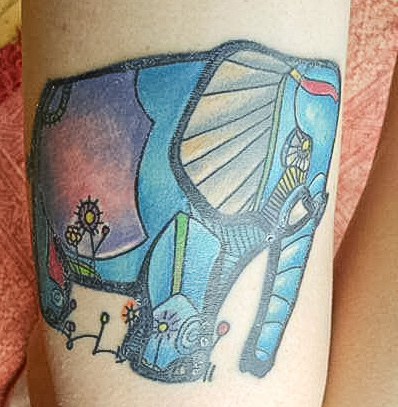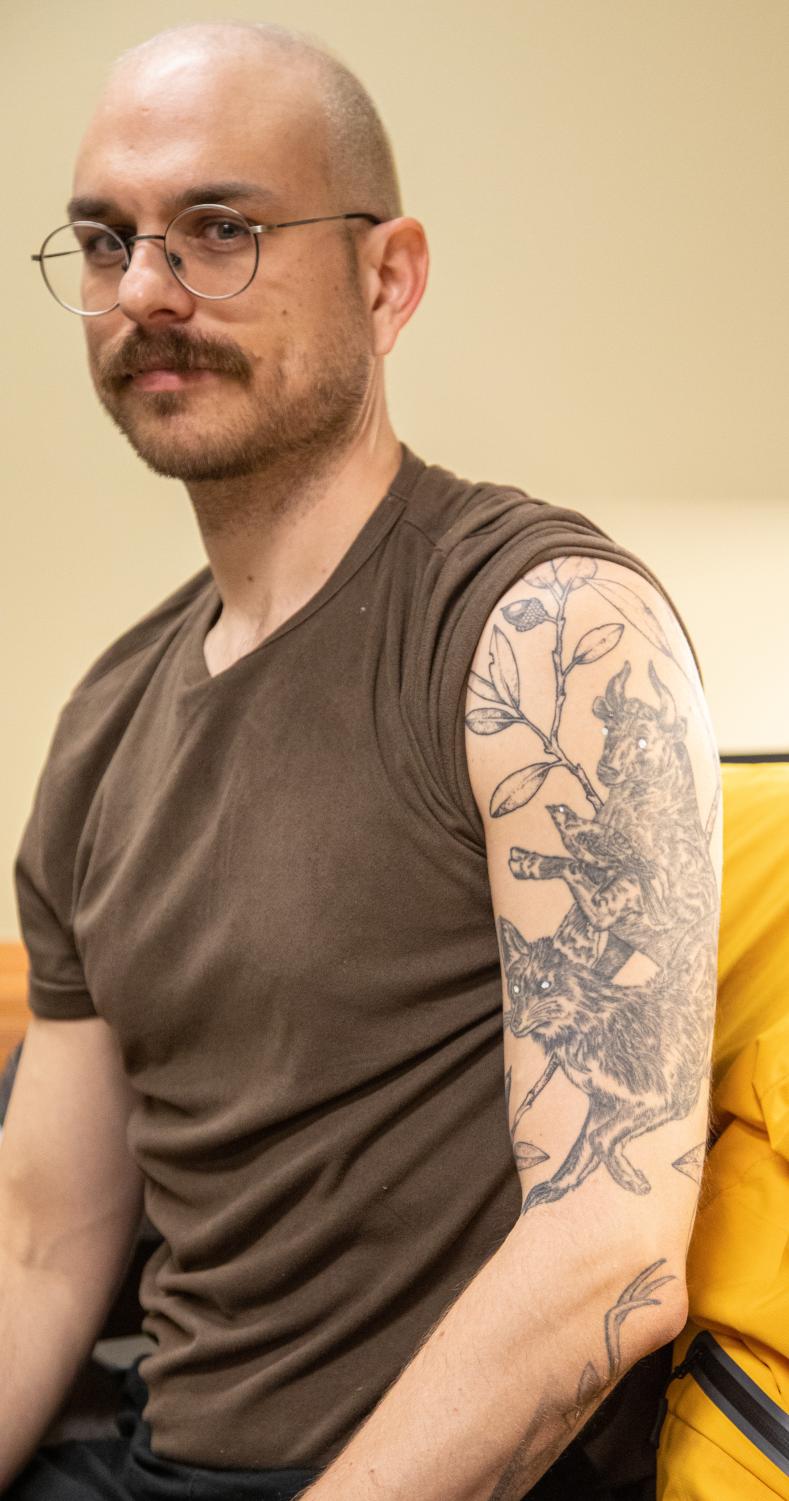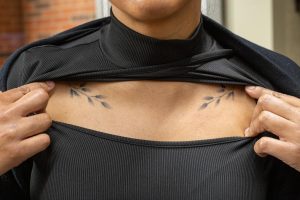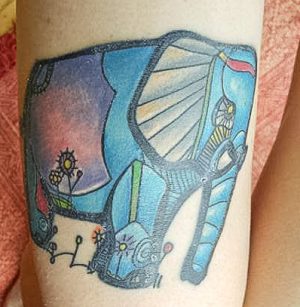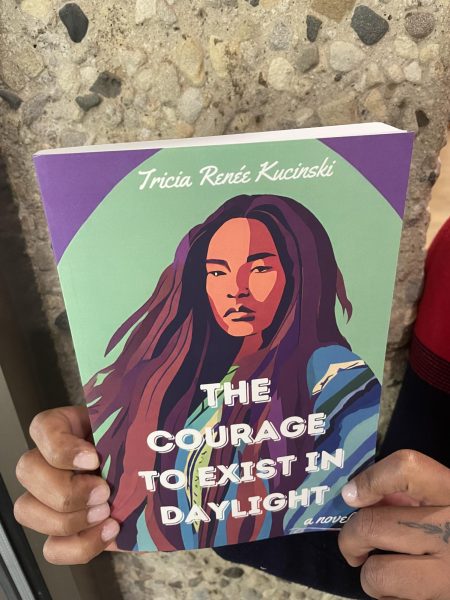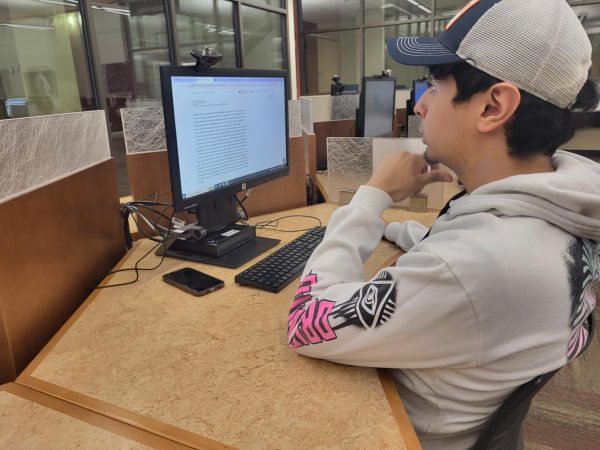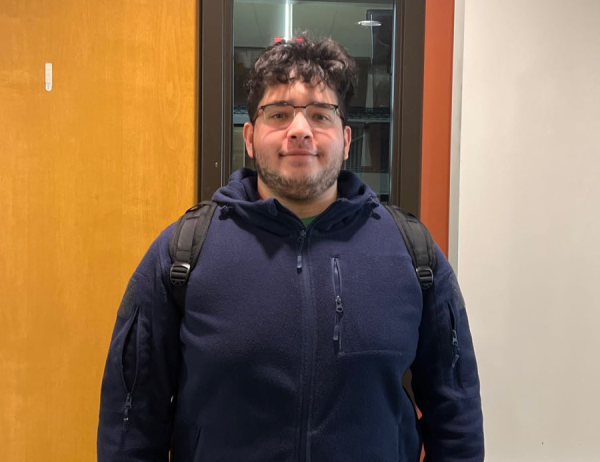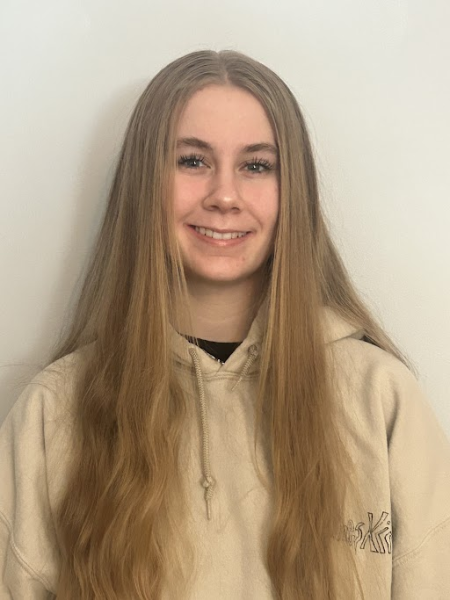“An aspect of personal expression:” Examining the meaning and importance behind teacher tattoos
This story is the fourth and final in a series about campus tattoos and their significance.
After falling asleep listening to an audiobook on his laptop, Assistant Professor of English Composition Patrick Carberry’s leg was left scalded due to his device’s cheap charger overheating while it was plugged into the wall. Sleeping through the whole ordeal, Carberry woke up with a huge burn mark on his leg, leaving a deep, purple scar.
“I hated the scar, so I always [wanted] to do something to counterbalance the scar or…to appease the anxiety I felt about my body because of the scar,” Carberry said. “So the first tattoo was a counterbalance to the scar I had.”
The tattoo, which is located on his lower right leg, was used to offset his feelings about the scar, which is located on his left leg.
Located on his left arm are many tattoos that can be described as a “sleeve,” comprised of multiple designs that were inked onto his arm at different times in his life. One of the most notable designs on Carberry’s sleeve is a live oak sapling, which protrudes from the background of his animal tattoos.
After reaching out to his favorite tattoo artist and not hearing back from them, Carberry applied for a position at ECC, and after applying, he visited the American South, where he experienced live oak saplings.
“I use acorns as worrying stones when I’m stressed about something or when I’m working on something serious,” Carberry said. “…I picked up this live oak acorn [in the South] to be my worrying stone for the job application at [ECC] I was working on.”
After going in for the interview at ECC, sitting and waiting anxiously outside with his acorn in hand, he received an unexpected message.
“I get an email from the tattoo artist saying, ‘I had a cancellation tomorrow, I’d love to [tattoo] this sapling on your arm. Can you come to Dover, New York tomorrow?’ It kind of seemed like the thing I was using to stress about the job […] seemed to align,” Carberry said.
For Carberry, tattoos serve as a way for him to own and feel more comfortable in his own body.
“[My tattoos] represent me,” Carberry said. “It’s a part of my body; it’s how I see myself interacting with the world around me.”
Holly
Professor of English Composition Sarah Bass talked about the story behind two of her tattoos, the first being a meaningful quote on her wrist.
At the time of getting art printed on her wrist, she had moved away to college, leaving the confines of the Christian household in which she was raised.
“I don’t want to say that it was a rebellious thing to do, but [at the time], Christians didn’t get tattoos,” Bass said. “So for me, …I was like, ‘What is wrong with a tattoo,’ so it corresponded to me questioning the legalism within my faith and what’s considered to be a good follower of Christ.”
The quote on her wrist, which says, “Via Crucis,” which is Latin for, “The Way of the Cross,” helps to remind her the way of faith and following Christ is much harder than she thought and how that idea would come to impact her life later.
“I think [the purpose of the tattoo] was me reorienting going to a secular place to find out what I actually thought about my faith,” Bass said in terms of the story and inspiration behind her wrist tattoo. “For me, it was set on a resolve, but it was also supposed to be a reminder for me that… if I called myself a follower of Jesus, was it going to be an easy one?”
Bass’ second tattoo, two leaves of holly, one on each of her collarbones, commemorates the memory of two important people in her life.
“Holly represents the season of Christmas [but] Christmas for me has a very different connotation,” Bass said. “Eleven years ago, my fiancé died, ten days before Christmas, suddenly, and then two years ago, my father died…on October 1, which very much marks the holiday season. You enter into October and even though it’s Halloween, it’s very much into the season of Christmas… and Advent, which is the approach of something.”
To Bass, the “approach of something” is associated with the approach of death, creating a distorted disconnection between the “external expression of celebration” and how hard and unexpected her life has been in light of these seasonal holidays.
“Holly for me represented there’s still a hope…for me in just the fact that there’s still green amidst all this death,” Bass said. “I think for me, it’s looking at the light and darkness and death as being a place that’s still fertile, where things can still grow; that’s why I hold onto that and that’s why I chose that, and because, apart from that, it looks pretty.”
Because of her tattoos, Bass faced scrutiny from the conservative Christian community in which she had grown up, though stating that her pilgrimage to a very liberal college helped her grow in her faith.
In terms of today’s blooming tattoo culture, Bass expressed her positive outlook on the highly debated subject.
“I think it’s cool,” Bass said. “I [also] think that my stigma has obviously changed as I’ve gotten older [and] I think some tattoos are better than others. For me, [tattoos] are an aspect of personal expression and I think it correlates to the desire for self-expression for people.”
A Scrapbook
Professor of English and Write Place Tutor Nicole DeKasha talked about one of six of her tattoos: a design that has a deep and emotional significance.
In terms of feelings and anxieties leading up to the day of tattooing, DeKasha said that she wasn’t particularly concerned about the act of getting a tattoo since she had already been through the process, but the feelings behind the subject matter of the tattoo were closely related to her state of mind at the time.
“It was a tattoo that was very emotionally significant to me, so I would say that I was feeling a little bit emotionally rot[ten], but also I was commemorating someone that I loved, so I felt good about that [and] I felt excited about that,” DeKasha said.
In 2014, DeKasha’s sister Angie passed away, which caused a monumental shift in her way of picking out and receiving tattoos.
“She was my best friend,” DeKasha said. “The tattoos I had before that were more, like, ‘Oh, I like this design so I’m going to get a tattoo of it.’ This was a different stage of getting tattoos for me and it was more about getting a tattoo that was more emotionally significant.”
According to DeKasha, she picked out a design and colors that she believed her sister would have loved, even though her sister was not a tattoo enthusiast.
“Every time I look at it, she’s the person that I think of,” DeKasha said. “I don’t want to say that it’s my most precious tattoo because my other tattoos also commemorate something that matters to me, but in some ways, it is my most precious tattoo because I was so close to her and her loss was so catastrophic.”
DeKasha believes that the art of getting tattoos is an intensely personal choice and a life-long commitment.
“Even though there are people who get [tattoos] spur of the moment, I think most people, and especially people who have really beautiful…pieces that were specifically designed for them, it isn’t just a thing on their skin,” DeKasha said. “It is a way of measuring a lifetime and what happens in that lifetime.
“You look at older generations who might have scrapbooks and photo albums, but [tattoos] in some ways are very similar to that; having a tattoo on your skin is like putting together a scrapbook of things that meant the most to you.”
Read part 1, part 2 and part 3 of our series on the meaning of tattoos that ECC students and faculty.



